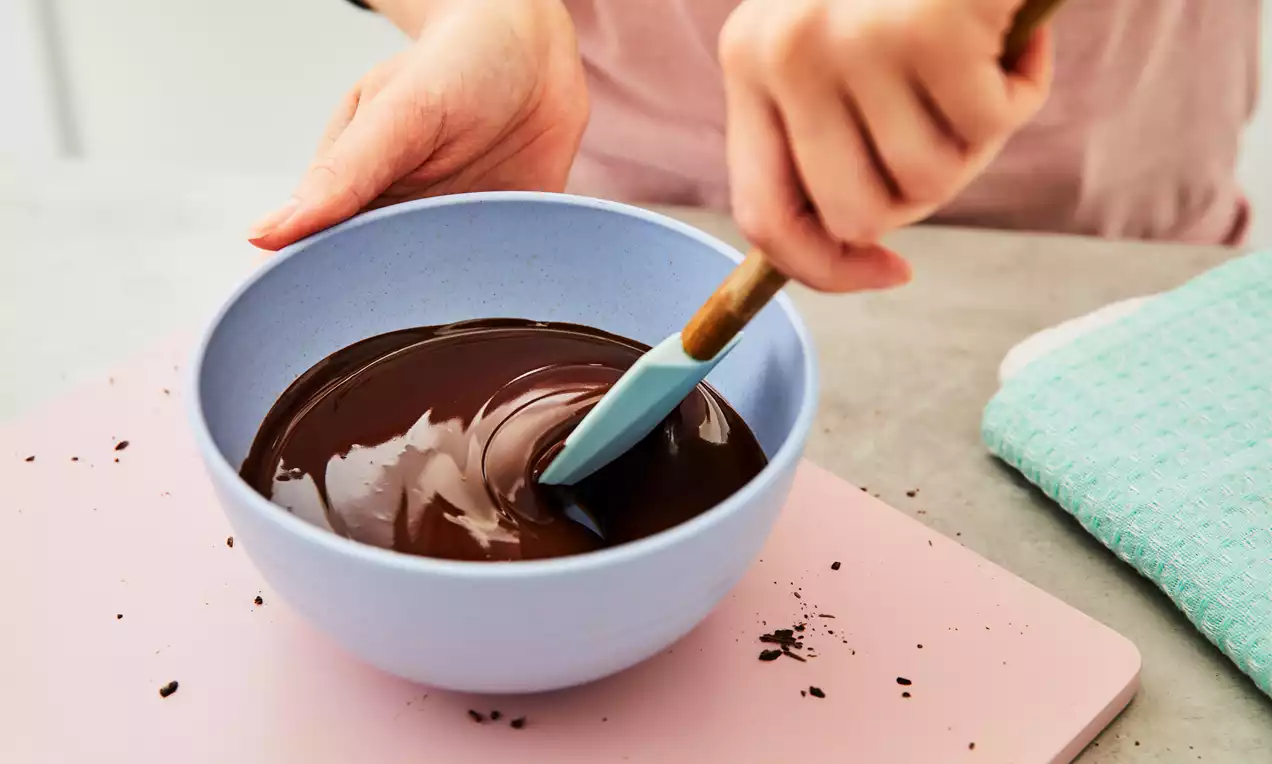
How to Temper Chocolate
The snap when you bite into a chocolate truffle. A beautifully shiny and snappy chocolate shape on the top of a showstopping cake. Tempered chocolate is absolutely wonderful. And tempering chocolate is a key skill to have in your baking repertoire. In this guide, we’ll teach you the best method for tempering chocolate and give you some tips on what not to do. Soon you’ll be creating sumptuous chocolate treats with the very best tempered chocolate.
Tempered chocolate is chocolate that has been slowly heated then cooled so the fat molecules crystalise together evenly. It has a smooth, shiny finish when set and should have a ‘snap’ when you break it. With tempered chocolate, you take it to a higher melting point than when you simply melt chocolate – this means it can be moulded into shapes. On the other hand, untempered chocolate has a dull finish and won’t break evenly.
Chocolate
Always use good quality chocolate. To save on chopping, you can use high-quality couverture chocolate in the form of fèves, buttons or pistoles.
• Mixing bowl
• Knife Saucepan
• Spatula
• Thermometer (we highly recommend using a thermometer)
So, you want to temper chocolate at home to get that beautiful chocolate finish, but what’s the best way to do it? Let’s take a look.
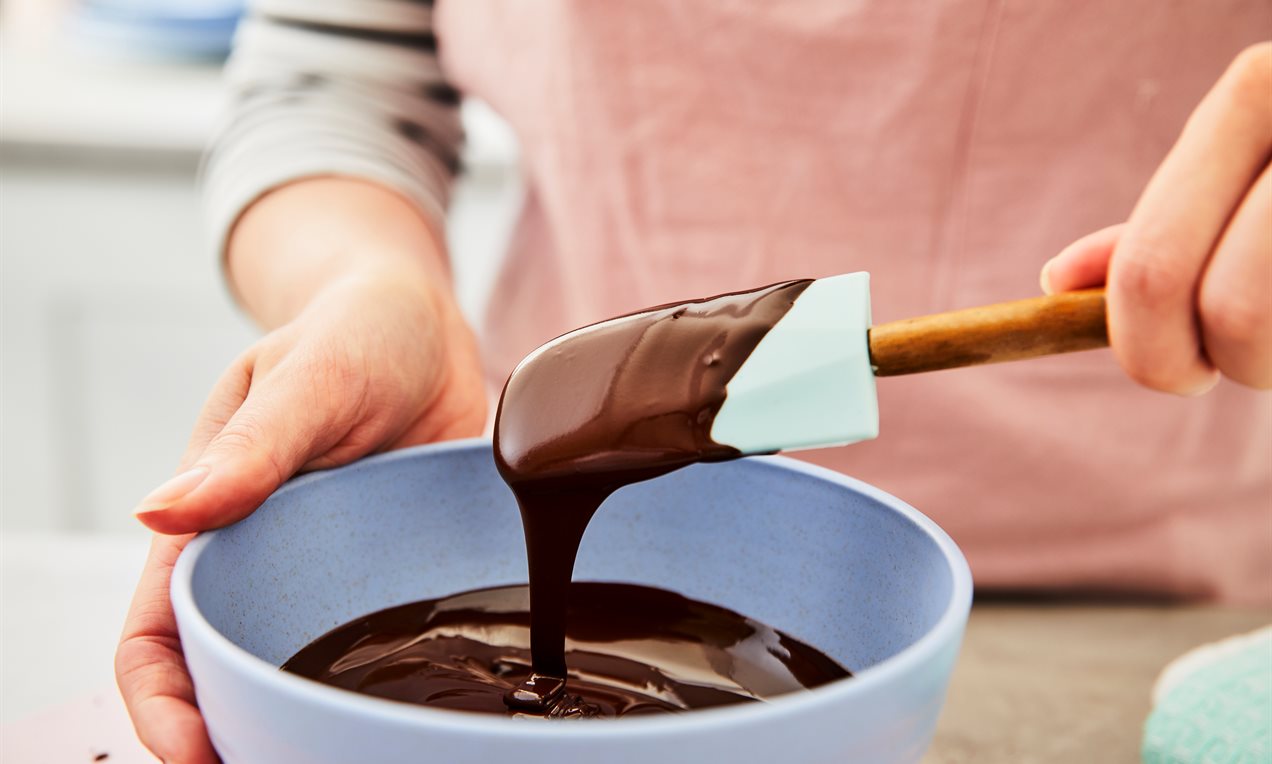
You have a few different options to make tempered chocolate at home, including seeding and tabling. You can also temper chocolate in the microwave or oven.
In this guide we’re going to focus on one of the most popular and straightforward methods of chocolate tempering: seeding.
With seeding, you add finely chopped pieces of chocolate into already-melted chocolate. By adding stable, crystalised chocolate this naturally lowers the temperature so the rest of the chocolate can crystalise.
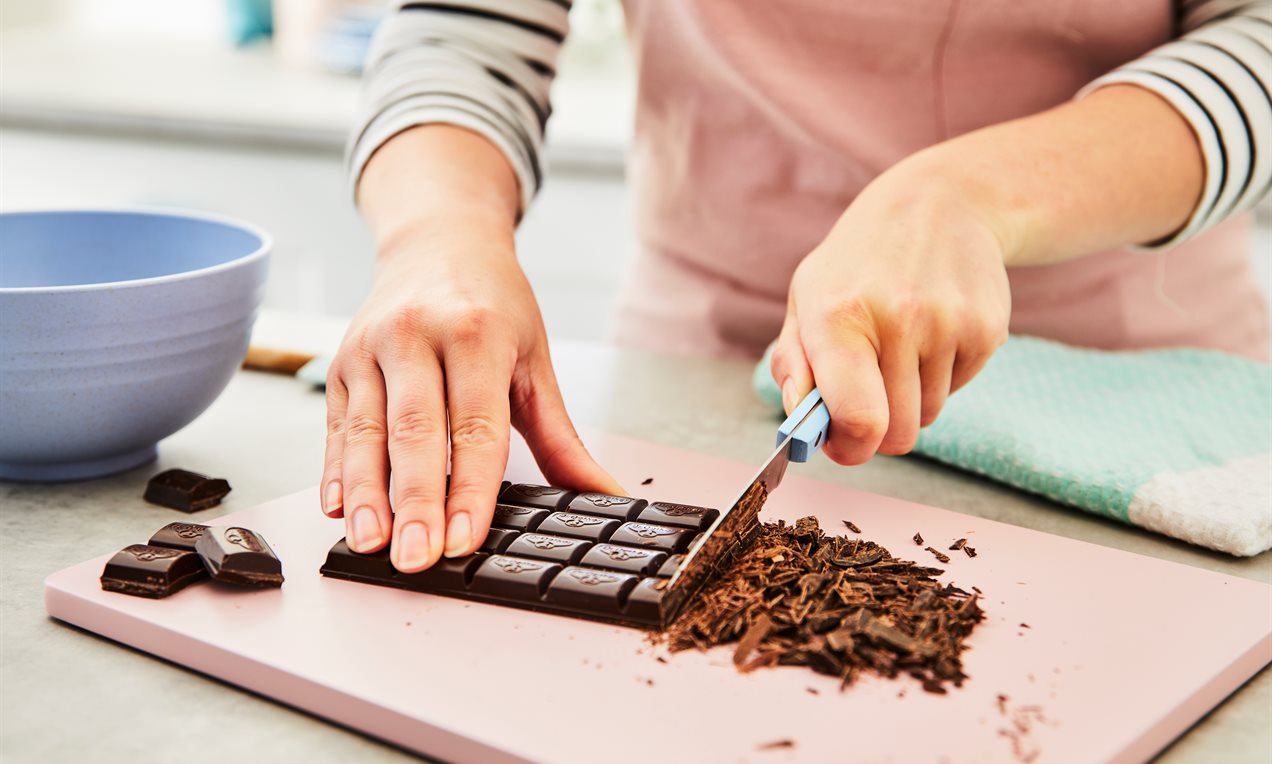
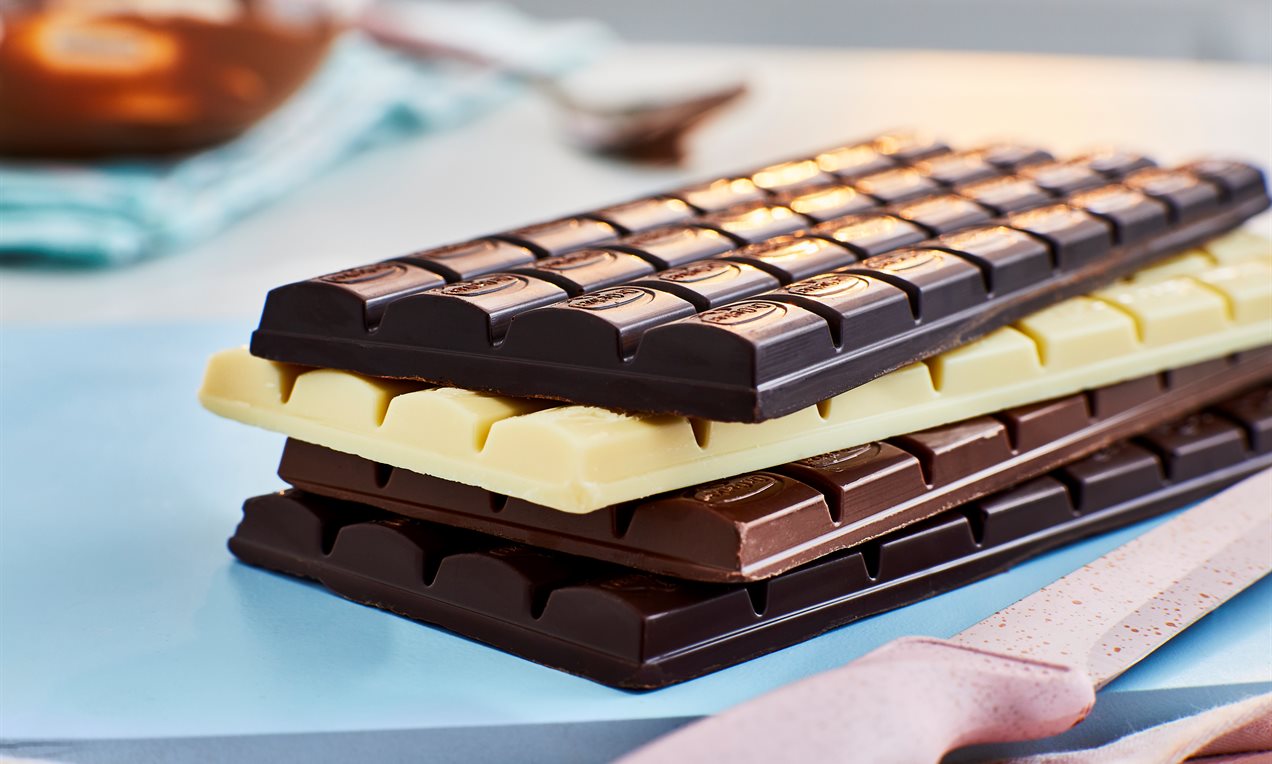
• Roughly chop 3/4 of the chocolate on a chopping board using a serrated knife.
• Finely chop the remaining quarter.
• Put your roughly chopped chocolate in a bowl.
• Half-fill a saucepan with hot water and place the bowl containing the chocolate over it. Make sure the bowl doesn’t touch the bottom of the saucepan.
• Slowly heat the water, but don’t let it boil.
• Stir the chocolate regularly using your spatula so it melts smoothly. Check the temperature with your thermometer. Once it hits 55°C-58°C for bittersweet/dark chocolate or 45°C-50°C for milk or white, remove the bowl containing the chocolate.
• Set 1/3 of the chocolate aside in a separate bowl in a warm place.
• Add the finely chopped chocolate into the remaining 2/3 of the melted chocolate and continually stir.
• For dark chocolate, it should reach a temperature of 28°C-29°C. Milk chocolate should reach 27°C-28°C, whilst white should reach 26°C-27°C.
• Add the melted chocolate you set aside. This will increase the temperature. Dark chocolate should reach 31°C-32°C. Milk chocolate should reach 29°C-30°C. White chocolate should reach 28°C-29°C.
• Keep stirring until it reaches the required temperature.
• Once it hits the right temperature, pour it into your mould.
• Leave it in a cool place to set.
When tempering white chocolate, these are the temperatures to work to:
• Melting: 45°C-50°C
• Tempered temp: 28°C-29°C
These are the temperatures to remember when tempering milk chocolate:
• Melting: 45°C-50°C
• Tempered temp: 29°C-30°C
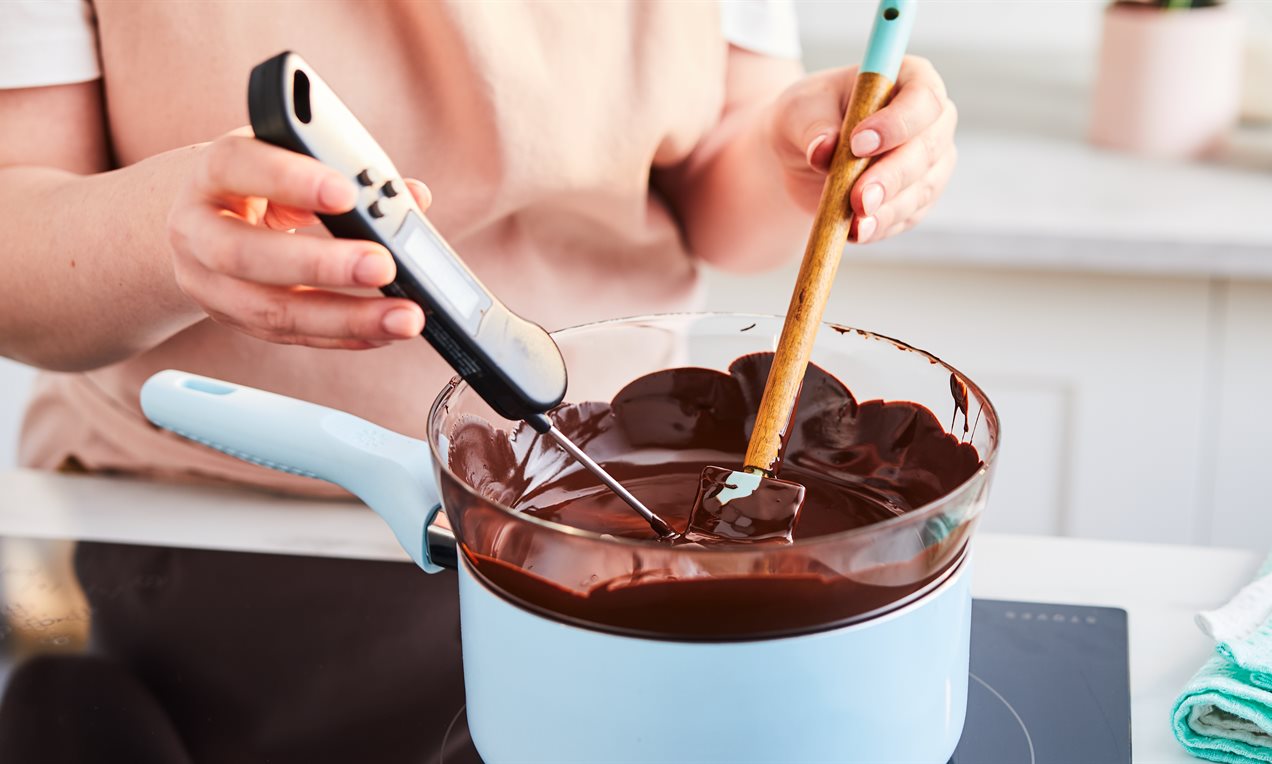
When tempering dark chocolate at home, remember the following temperatures:
• Melting: 55°C-58°C
• Tempered temp: 31°C-32°C
These are three of the biggest mistakes you can make when tempering chocolate:
You need to be precise when it comes the temperature of your chocolate, both for melting and tempering. If you go higher than these temperatures, you’ll sacrifice flavour. If you don’t go high enough, it won’t temper properly. A thermometer is an essential piece of kit to have in your kitchen.
Even the tiniest bit of water in your melted chocolate (yes, even a droplet from steam) will cause it to seize. It will then become lumpy rather than smooth.
If your recipe requires liquid – this could be butter, water or coffee for example – melt it alongside the chocolate at the same time.
If your melted chocolate does seize, you can fix it by adding a little more water, melted butter or oil back into the mix. You’ll need to stir vigorously to get it smooth once again. Yes, you’ve saved it but it won’t be good enough for tempering or to use in a bake. Keep it as a chocolate sauce.
Chocolate chips have added ingredients to make sure they keep their shape, even when exposed to heat. This means they won’t melt down evenly.
Tempered chocolate is perfect when you want a glossy finish with a little snap. Use it to coat delicate chocolate truffles, dip cake pops into it or to create the perfect finish on our Triple Chocolate Ganache Cake. And once you build up those tempering skills, you can even use it to make homemade Easter eggs.
How do you know if chocolate is tempered?
The first thing to check is the temperature of your tempered chocolate. There are varying temperatures depending on your chocolate of choice, including:
• White chocolate: 29°C-30°C
• Milk chocolate: 30°C-31°C
• Dark chocolate: 31°C-32°C
Tempered chocolate also shouldn’t contain any lumps. Once it’s cooled, it will have a shiny finish and will snap when broken. Untempered chocolate will be dull and won’t break cleanly.
Can you temper chocolate in the oven?
It is possible to temper chocolate in the oven. Pre-heat your oven to no more than 150°C then turn it off once it reaches this temperature. Place your chocolate in an oven-proof bowl and let it stand until it melts. You’ll need to keep checking the temperature with your thermometer.
Whilst you can do it in the oven, we recommend using the seeding technique as it enables you to be a little more precise.
Is tempering chocolate the same as melting chocolate?
Both tempering and melting are forms of melting chocolate, but they’re a little different. When you melt chocolate, you separate the molecules. With tempering you bond those molecules back together, so it hardens with a glossy and snappy finish. Check out our guide of How to Melt Chocolate to see the difference.
Now you can temper chocolate you’ll make the shiniest and snappiest chocolate to decorate your cakes and truffles. Keen to add some more baking skills to your home baking repertoire? Simply check out our other home baking tips and tricks, including
Now you can temper chocolate, you’ll make the shiniest and snappiest chocolate to decorate your cakes and truffles. Keen to add some more baking skills to your home baking repertoire? Check out our other home baking tips and tricks, including How to Make Chocolate Ganache and How to Measure Ingredients Correctly. Why not explore our Chocolate Bars selection too, from rich dark chocolate to creamy milk chocolate or velvety white chocolate, we’ve got you covered.